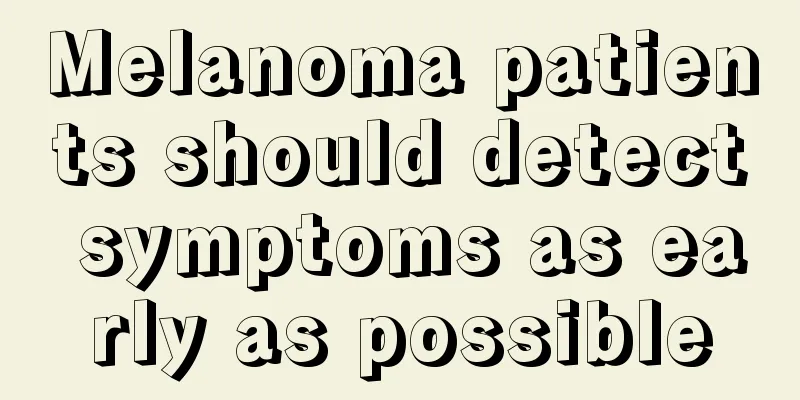What are the early symptoms of nasopharyngeal carcinoma? What is the prognosis of nasopharyngeal carcinoma?

|
What are the early symptoms of nasopharyngeal carcinoma? What is the prognosis of nasopharyngeal carcinoma? The early symptoms of nasopharyngeal cancer are not obvious, so they are easily ignored by patients and doctors. These symptoms include nosebleeds, runny nose, nasal congestion or Eustachian tube occlusion that blocks hearing. Bleeding rarely occurs in the early stages, and later symptoms include overlapping images, facial pain and headaches. Since the nasopharynx has a strong lymphatic drainage duct leading to the neck, the first symptom of the spread of nasopharyngeal cancer may be swollen lymph nodes. Patients who seek medical attention immediately at this stage may have a chance of cure. If the cancer cells become too large or spread to the lungs, liver and bones, the possibility of cure is much smaller. The early symptoms of nasopharyngeal carcinoma are not obvious and it is difficult to detect. 80% of patients are already in the late stage when they are discovered. Serological examinations can help to detect nasopharyngeal carcinoma early. After radiotherapy, the five-year survival rate of stage I patients is over 90%. The prognosis of nasopharyngeal carcinoma is related to the following three factors: 1. Racial differences There are obvious racial differences in the incidence and prognosis of nasopharyngeal carcinoma. It is more common in the yellow race and less common in the white race. The severity and prognosis of nasopharyngeal carcinoma in the yellow race are worse than those in the white race. 2. Treatment methods The choice of treatment method directly affects the survival rate of nasopharyngeal carcinoma. Currently, the best way to treat nasopharyngeal carcinoma is radiotherapy. However, many nasopharyngeal carcinoma patients cannot bear the side effects of radiotherapy and give up during the treatment process. Although radiotherapy technology is constantly improving and perfecting, it is still impossible to completely eliminate side effects. Other treatment methods are needed to enhance the patient's tolerance. 3. Early detection The 5-year survival rate of nasopharyngeal carcinoma patients who are detected and treated early is four times that of those detected in the late stage. Early detection, early diagnosis and early treatment are important parts of nasopharyngeal carcinoma prevention and treatment. However, the early diagnosis rate of nasopharyngeal carcinoma is still not ideal. According to incomplete statistics, less than 1/2 of nasopharyngeal carcinoma patients found in outpatient clinics have early nasopharyngeal carcinoma. |
<<: Can cancer screening detect nasopharyngeal cancer?
>>: What is the identification method for nasopharyngeal carcinoma and how to identify it
Recommend
I know you have a bad stomach, so I show this to you!
Tips for nourishing the stomach: 1. Develop good ...
What are the types of lung cancer symptoms? Lung cancer symptoms are mainly divided into 4 categories
The occurrence of lung cancer is very painful for...
What should I do if my eyes become bloodshot after double eyelid surgery?
In order to make the eyes appear bigger and brigh...
How to wash mildew stains off white clothes
Wearing white clothes for a long time will cause ...
How to diagnose lung cancer early? You can do these tests
The early symptoms of lung cancer are not particu...
What are the benefits of washing your face with eggs
It is very beneficial to use egg white to apply o...
Why does nasopharyngeal carcinoma metastasize during treatment
Metastasis during treatment of NPC may be related...
What fruits are slimming foods
Many people don't know much about alkaline fo...
What are the symptoms of lung cancer
What are the symptoms of lung cancer? The occurre...
What is the correct way to take fish oil and lecithin
With the gradual improvement of living standards,...
Acne near lymph nodes
Although swollen lymph nodes do not threaten a pe...
The difference between polarized light and UV protection
Polarization means using the principle of reflect...
What kind of supplements are good for patients with esophageal cancer?
The reason why some people develop esophageal can...
My heart beats very fast after drinking
Many people will have various reactions after dri...
The efficacy and contraindications of Maojian
There are many varieties of tea in China. Because...









